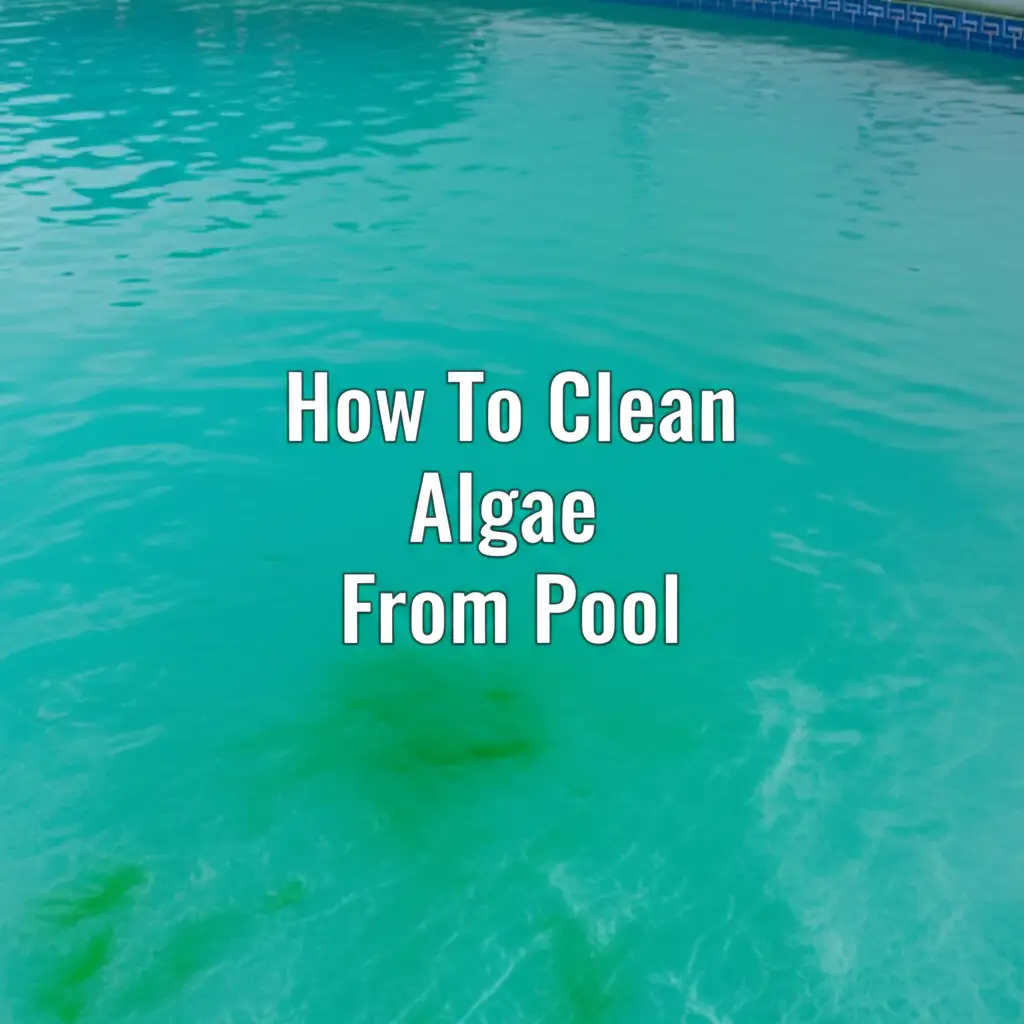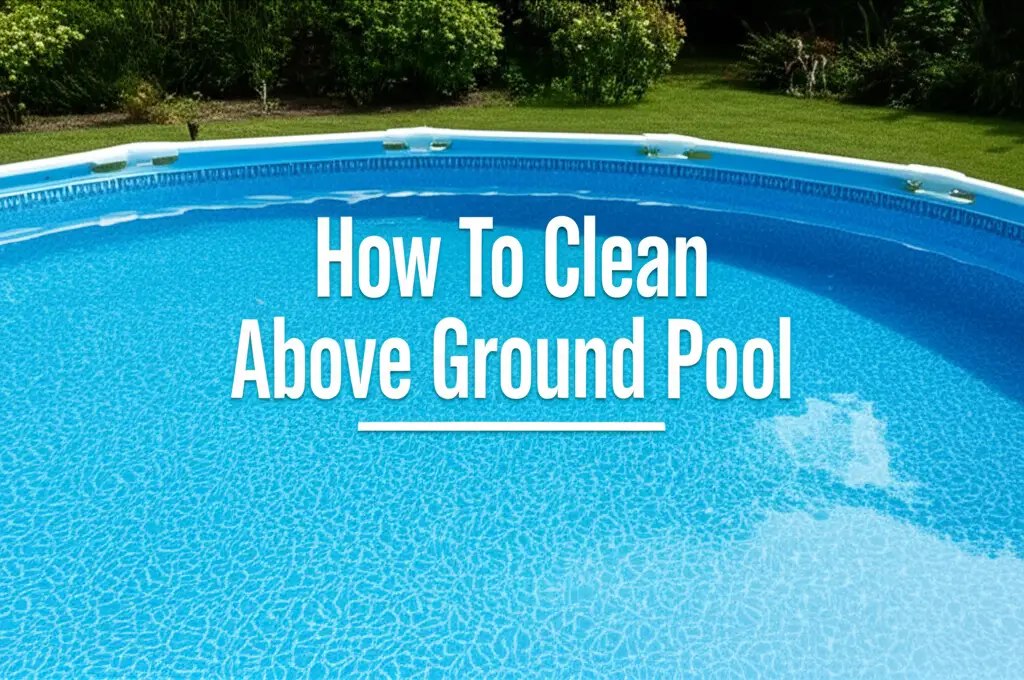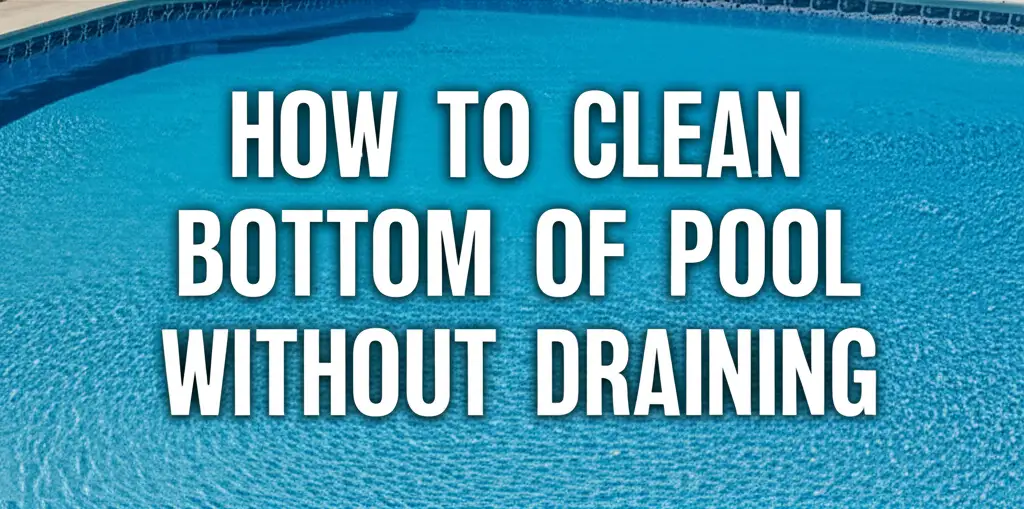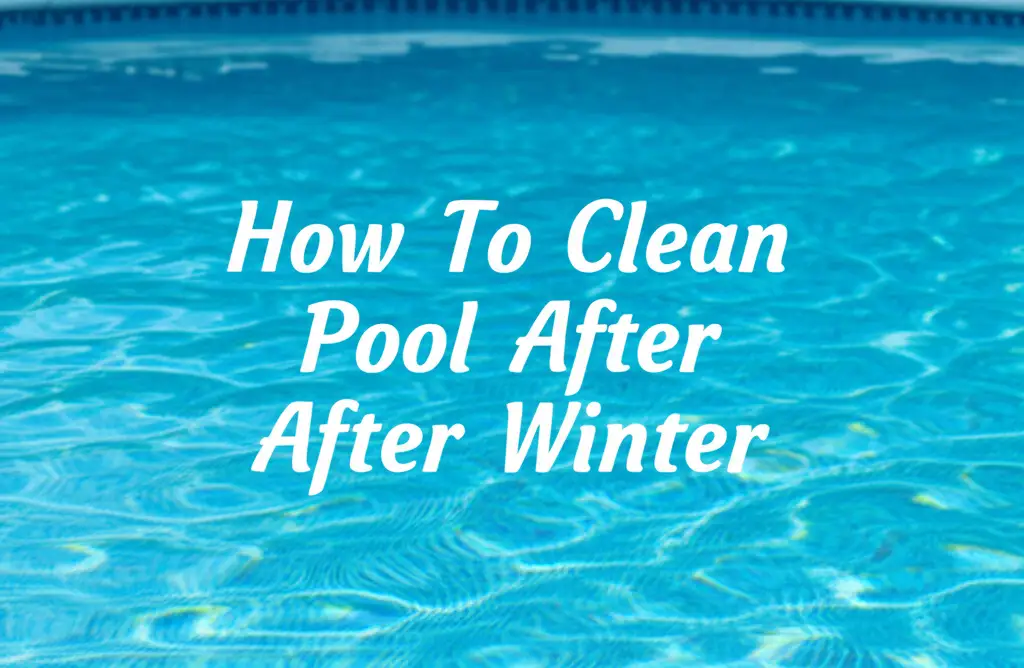· Pool Maintenance · 17 min read
How To Clean Pool Walls
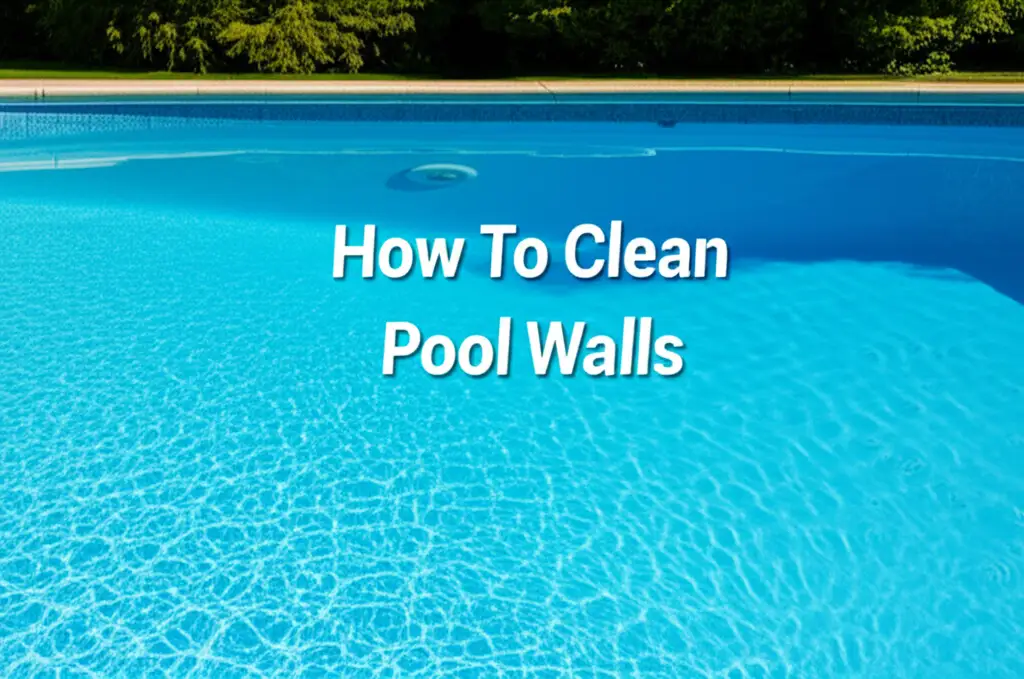
Unlock Crystal-Clear Waters: How to Clean Pool Walls Effectively
Imagine a perfect summer day. You step outside, ready for a refreshing dip in your pool. But then you see it: dingy, discolored walls. This sight can quickly turn your excitement into frustration. Dirty pool walls are more than just an eyesore; they can harbor algae, minerals, and debris, affecting water quality and sanitation. Learning how to clean pool walls makes a big difference. It keeps your pool healthy and beautiful. I understand the desire for a sparkling clean pool. That is why I created this guide.
Maintaining clean pool walls is a fundamental part of proper pool care. It prevents unsightly buildup. It also helps your pool filtration system work better. Algae and dirt on walls can consume sanitizers, making your water harder to balance. A routine cleaning schedule saves you effort later on. In this comprehensive guide, I will share practical steps for effective pool wall cleaning. We will explore essential tools. We will discuss techniques for different pool surfaces. We will also cover tackling stubborn stains. You will soon have a pool that looks inviting and feels clean.
Takeaway:
- Regularly brush pool walls to prevent buildup.
- Balance pool chemistry before cleaning.
- Use the correct brush for your pool surface.
- Treat algae and stains promptly with targeted solutions.
- Maintain proper filtration for ongoing wall cleanliness.
To clean pool walls effectively, first balance the water chemistry. Then, select the appropriate brush for your pool surface type. Systematically brush the walls from the shallow end to the deep end, dislodging dirt and algae into the water. Finally, run your pool filter to remove the suspended debris.
Why Your Pool Walls Need Regular Cleaning
Pool walls are the first line of defense against dirt and grime. They are constantly exposed to various elements. These elements include sunlight, chemicals, and bathers. Over time, these exposures lead to buildup. This buildup affects the pool’s appearance and hygiene. Understanding why walls get dirty helps us clean them better.
Common Sources of Pool Wall Grime
Several factors contribute to dirty pool walls. Each factor requires specific attention during cleaning. Knowing these causes helps you prevent future issues.
- Algae: Algae is a common culprit. It thrives in warm, sunlit water with unbalanced chemistry. Green algae, black algae, and mustard algae are typical types. They cling to walls and surfaces. Algae makes water cloudy and unsafe. Dealing with algae quickly is important. You can learn more about this by checking out our guide on how to clean algae from pool.
- Dirt and Debris: Wind blows dirt, leaves, and dust into the pool. Bathers also introduce dirt. These particles settle on walls and the pool bottom. They form a grime layer. Regular skimming helps, but some still sticks to the walls.
- Mineral Stains: Hard water contains minerals like calcium and iron. These minerals deposit on pool walls, especially at the waterline. Calcium scaling appears as white or gray crusts. Iron stains show as reddish-brown marks. These stains are tough to remove.
- Sunscreen and Oils: Lotions and body oils wash off bathers. These substances float on the water surface. They often leave a greasy residue along the waterline. This residue attracts dirt and becomes a stubborn ring.
- Poor Circulation: Areas with poor water flow do not get enough filtered water or sanitizers. This creates dead spots. Algae and dirt accumulate more easily in these areas. Good circulation prevents this buildup.
Regular cleaning prevents these issues from escalating. It keeps your pool inviting and safe. Ignoring dirty walls allows problems to grow. This makes future cleaning harder.
Essential Tools and Supplies for Pool Wall Cleaning
Effective pool wall cleaning requires the right tools. Using the correct equipment makes the job easier and more efficient. It also protects your pool’s surface. Here is a list of what you will need.
Brushes and Poles
Your main tool for wall cleaning is a good pool brush. Different brushes suit different pool surfaces.
- Nylon Brushes: These brushes are soft. They are ideal for vinyl liners and fiberglass pools. Nylon bristles will not scratch delicate surfaces. They are effective for general dirt and light algae.
- Wire Brushes: Wire brushes are much stiffer. They work well on concrete, gunite, and plaster pools. These surfaces are durable. Wire bristles can tackle tough stains and black algae. Do not use them on vinyl or fiberglass pools. They will damage the liner.
- Combination Brushes: Some brushes combine nylon and wire bristles. These are versatile for multi-surface pools. They offer a balance of scrubbing power and gentleness.
- Telescopic Pole: Attach your brush to a telescopic pole. This allows you to reach all areas of the pool walls. Choose a sturdy, adjustable pole. It should be long enough for your pool’s depth and width.
Cleaning Agents and Chemicals
Beyond brushing, you may need specific chemicals. These help with stubborn stains or heavy algae.
- Pool Shock: This is concentrated chlorine. It kills algae and bacteria. Use it to super-chlorinate your pool after brushing algae. Shock treatments are critical for clear water.
- Algaecide: This chemical prevents algae growth. It also helps kill existing algae. Use it as a follow-up to shocking. It provides an extra layer of defense.
- Stain Removers: Specific products target mineral stains. Look for acid-based removers for calcium deposits. Use sequestering agents for metal stains. Always follow product instructions carefully. For general stains, you might find tips in our guide on how to clean stains off walls.
- Surface Cleaners: These are often specialized cleaners for pool tiles. They remove grime and calcium. Some are vinegar-based. You can find more about using vinegar on pool tiles in our article on how to clean pool tile with vinegar.
- Protective Gear: Always wear gloves and eye protection when handling pool chemicals. This protects your skin and eyes from irritation or burns.
Other Useful Tools
- Pool Net/Skimmer: Use this to remove large debris before brushing. This prevents it from clogging your filter.
- Pool Vacuum: After brushing, much of the dislodged debris will settle. A pool vacuum, manual or robotic, will pick this up. This step is crucial for overall cleanliness. If you are interested in cleaning your pool without a vacuum, we have a guide on how to clean pool without vacuum.
- Water Testing Kit: Test your water before and after cleaning. This ensures chemical balance. It helps identify any issues contributing to wall grime.
Having these tools ready makes the cleaning process smooth. It ensures you can tackle any pool wall challenge.
Preparing Your Pool for Wall Cleaning
Preparation is key to effective pool wall cleaning. A few simple steps before you start brushing make a big difference. They ensure the chemicals work correctly. They also protect your equipment.
1. Test and Balance Pool Water
Always start by testing your pool water. Use a reliable testing kit or strips. Check levels for:
- pH: The ideal range is 7.4-7.6. High pH can cause scaling. Low pH can make sanitizers less effective.
- Alkalinity: This buffers pH. The ideal range is 80-120 ppm.
- Chlorine (or other sanitizer): Ensure your sanitizer levels are within the recommended range. If dealing with algae, you may need to super-chlorinate later.
Adjust any imbalanced levels before you begin scrubbing. Chemicals work best in balanced water. This maximizes their cleaning power.
2. Skim and Remove Large Debris
Before brushing, use a leaf net to skim your pool. Remove any floating leaves, bugs, or large debris. This prevents debris from breaking down and settling on the walls again. It also keeps your filter cleaner during the process. Getting rid of the big stuff first makes wall cleaning easier.
3. Turn Off Pool Pump (Optional, for heavy cleaning)
For a light cleaning, you can leave the pump running. The filter will collect dislodged particles. However, for a deep clean or when shocking, turn off the pump. This allows dislodged debris to settle on the bottom. It makes vacuuming more effective afterward. Some prefer to brush with the pump off. This ensures the dirt does not circulate again.
4. Prepare Your Cleaning Solutions
If you plan to use specialized stain removers or algaecides, prepare them. Read product instructions carefully. Mix them in a separate bucket if required. Have your brush and pole assembled. Ensure everything is within reach. This saves time and effort during the cleaning process.
5. Consider Lowering Water Level (For Waterline Stains)
For stubborn waterline stains, you might consider lowering your water level slightly. This exposes the waterline. It allows you to scrub it directly. You can use a specialized cleaner or a paste of pool chemical on these areas. Do not lower the water too much. Ensure your skimmer is not exposed. This step is usually only needed for very tough waterline rings.
Proper preparation sets you up for success. It ensures your efforts result in truly clean pool walls.
Step-by-Step Pool Wall Scrubbing Techniques
Once your pool is prepared, it is time to start scrubbing. The technique you use matters. It determines how effectively you clean the walls. It also prevents damage to your pool surface. Follow these steps for a sparkling result.
1. Choose the Right Brush
As discussed, selecting the correct brush is vital.
- Vinyl and Fiberglass Pools: Use a soft nylon brush. This prevents scratching. These surfaces are delicate.
- Concrete, Gunite, and Plaster Pools: A wire brush is suitable for these durable surfaces. It provides the necessary scrubbing power. You can also use combination brushes.
Using the wrong brush can damage your pool. Always verify your pool’s surface material before you start.
2. Start from the Shallow End and Work Down
Begin brushing from the shallow end of your pool. Work your way towards the deep end. This directs the dislodged dirt and algae towards the main drain. It helps the filtration system collect it. Brush in overlapping strokes. Cover every inch of the walls.
3. Scrub in Overlapping Sections
Brush the walls in methodical, overlapping sections. Start at the top of the wall. Work your way down to the bottom. Use firm, even pressure. Do not rush. Ensure you cover the entire surface. Pay extra attention to corners and crevices. Algae and dirt often accumulate in these hidden spots. These areas have less water circulation.
4. Pay Attention to the Waterline
The waterline is often the dirtiest part of the pool. It collects scum, oils, and minerals. Use extra effort here. A dedicated scrubbing pad or a stiffer brush may be helpful for tough rings. You can also apply a specific waterline cleaner if needed. Some people use a paste of baking soda and water for a natural clean. This is especially good for tackling dirt off walls at the waterline.
5. Address the Steps and Ladders
Do not forget the steps and ladders. These areas are used often. They can collect dirt and algae. Scrub them thoroughly with your pool brush. For ladders, a smaller hand brush might be more effective. Ensure all parts are clean for safety and appearance.
6. Brush the Pool Bottom (Optional but Recommended)
After brushing the walls, give the pool bottom a quick brush too. This dislodges any remaining dirt that settled. It prepares the pool for vacuuming. Brushing the bottom ensures all loose debris is suspended. This makes it easier for your filter or vacuum to remove. This is a good complement to how to clean bottom of pool without draining efforts.
Brushing should be a regular part of your pool maintenance. Aim to brush your pool walls at least once a week. This prevents buildup and keeps your pool sparkling.
Tackling Common Pool Wall Stains
Even with regular brushing, stains can appear. Different types of stains require different treatment methods. Identifying the stain type is the first step. Then you can choose the right cleaning solution.
1. Algae Stains (Green, Black, Mustard)
Algae is a persistent problem. It leaves unsightly stains on pool walls.
- Green Algae: This is the most common type. It makes your pool water cloudy and gives walls a slippery feel.
- Treatment: Aggressively brush walls with a suitable brush. Then, shock your pool. Follow with an algaecide. Run your filter continuously. Vacuum any settled debris.
- Black Algae: This is very stubborn. It forms dark, spotty patches. It has a protective layer.
- Treatment: Use a wire brush for plaster or concrete pools. Break open the protective layer of the algae spots. Then, apply concentrated chlorine directly to the spots. You can also use a trichlor tablet (in a sock) to rub directly on the spot. Shock the entire pool afterwards. Repeat as needed. Black algae often requires multiple treatments.
- Mustard Algae (Yellow Algae): This looks like dirt or pollen. It brushes away easily but reappears quickly.
- Treatment: It requires specialized treatment. Use a mustard algaecide designed for this type. Brush walls thoroughly. Shock the pool. Clean all pool equipment that touched the water. This includes toys, floats, and skimmer baskets. Mustard algae spores can hide anywhere.
Remember, proper water chemistry and consistent sanitization prevent algae. For a deep dive into algae removal, check out our guide on how to clean algae from pool.
2. Mineral Stains (Calcium, Rust)
Mineral deposits create tough stains. These often appear as white, gray, or reddish marks.
- Calcium Scaling (White or Gray): This looks like a rough, crusty deposit. It occurs when pH and alkalinity are high. It is common at the waterline.
- Treatment: Use a pumice stone for plaster or concrete pools. Use a stain eraser for vinyl liners. You can also use specialized calcium removers. Some pool owners use a muriatic acid solution, but this requires extreme caution. Always dilute acid into water, never water into acid. Wear full protective gear.
- Rust Stains (Reddish-Brown): These often come from metal objects in the pool. They also come from high iron content in the water.
- Treatment: Use a vitamin C tablet (ascorbic acid). Rub it directly on the stain. It often removes rust stains quickly. For larger areas or deep-seated stains, use a commercial metal stain remover. Follow product instructions carefully.
3. Dirt and Scum Lines
These appear as dark rings around the waterline. They come from body oils, sunscreens, and environmental dirt.
- Treatment: Use a dedicated waterline cleaner or a mild abrasive cleaner. A magic eraser sponge works well on many surfaces. You can also make a paste of baking soda and water. Scrub the line with a soft cloth or brush. For deeper cleaning, you might need to slightly lower the water level. This allows easier access to the stain.
Treating stains promptly prevents them from becoming permanent. Always test any new cleaning product on a small, inconspicuous area first. This checks for adverse reactions.
Deep Cleaning and Problematic Walls
Sometimes, routine cleaning is not enough. Your pool walls might need a deep clean. This is especially true after winterization or if problems were ignored. Deep cleaning tackles severe algae, heavy scaling, and other persistent issues.
After Winter Cleaning
Pools often sit unused during winter. This can lead to heavy buildup. When you open your pool for the season, the walls can be a mess. This is where a deep clean is necessary.
- Assess the Damage: First, look at the walls. Are there heavy algae blooms? Is there widespread staining? Note down all problems.
- Heavy Brushing and Shocking: Begin with aggressive brushing. Use the correct brush for your pool type. Brush every surface thoroughly. Then, heavily shock your pool. You might need to use 2-3 times the normal shock dose. This helps kill dormant algae and bacteria. Running the filter continuously is important. You can find more detail in our guide on how to clean pool after winter.
- Multiple Treatments: For severe green or black algae, you may need multiple shock treatments. Wait 12-24 hours between treatments. Brush again before each new shock.
- Vacuuming to Waste: After shocking and brushing, a lot of debris will settle. Vacuum this debris directly to waste. This bypasses your filter. It prevents the dirty water from returning to the pool. This is key for very dirty pools.
Dealing with Persistent Algae
Black algae is notorious for its persistence. It can be very difficult to remove.
- Direct Application: For persistent black algae spots, consider direct application of chlorine. Place a trichlor tablet in a sock. Hold it against the spots for several minutes. The high concentration of chlorine attacks the algae.
- Acid Washing (for plaster/concrete): In extreme cases of heavy scaling or black algae on plaster or concrete pools, an acid wash might be needed. This involves draining the pool. Then, apply a diluted muriatic acid solution to the walls. This strips away a thin layer of plaster. This removes stains and algae. Acid washing is a specialized job. It is best done by a professional. It is dangerous for DIY unless you have experience.
Extreme Calcium Buildup
Heavy calcium scaling can be challenging.
- Scaling Removers: Commercial scaling removers are available. They dissolve calcium deposits. Follow their instructions carefully.
- Pressure Washing (empty pool): For an empty concrete or plaster pool, pressure washing can remove loose calcium and dirt. Be careful not to damage the surface. This is a strong cleaning method.
- Tile Cleaning Solutions: For pool tiles, specific cleaners work wonders. You can even use a vinegar solution for lighter calcium buildup. Our article on how to clean pool tile with vinegar offers more advice.
Deep cleaning is demanding. It yields great results. It restores your pool walls to their pristine condition.
Maintaining Clean Pool Walls
Keeping pool walls clean is an ongoing effort. Regular maintenance prevents major issues. It saves you time and money in the long run. Consistency is key.
1. Regular Brushing is Non-Negotiable
Make brushing your pool walls a routine task. I recommend brushing at least once a week. This simple action prevents algae and dirt from clinging firmly to surfaces. It dislodges particles. It sends them into the water. Your filter can then remove them. This proactive approach dramatically reduces the need for deep cleaning. This is one of the easiest ways to keep your pool looking great.
2. Maintain Optimal Water Chemistry
Balanced water chemistry is crucial for clean walls. When pH, alkalinity, and sanitizer levels are correct, your pool is less hospitable to algae and mineral buildup.
- Sanitizer Levels: Keep chlorine or other sanitizer levels within recommended ranges. This actively kills algae spores before they can grow on walls.
- pH and Alkalinity: Proper pH prevents scaling. Good alkalinity buffers pH. Both contribute to stable water. Stable water reduces mineral deposits. Test your water regularly. Adjust chemicals as needed.
- Calcium Hardness: Monitor calcium hardness. If it is too high, it can lead to scaling on walls and equipment. If it is too low, it can corrode surfaces.
Consistent water balance is your best defense against dirty walls.
3. Ensure Proper Filtration and Circulation
Your pool’s filtration system is vital for clean walls. It removes suspended particles.
- Run Your Filter: Run your pool filter for at least 8-12 hours per day. This circulates the water. It passes it through the filter. This removes dirt and algae spores.
- Backwash/Clean Filter: Regularly backwash or clean your pool filter. A dirty filter cannot effectively remove debris. This allows particles to settle on walls.
- Check Returns: Ensure your pool’s return jets are pointed correctly. They should create good water circulation. This helps push debris towards the skimmer and main drain. It also prevents dead spots where algae can thrive.
Effective filtration and circulation complement manual brushing. They work together to keep walls clean.
4. Address Algae and Stains Immediately
Do not let small problems grow into big ones. If you spot a patch of algae, brush it immediately. Shock the pool. If you see a new stain, identify its source. Treat it quickly. Early intervention prevents stains from setting. It makes them much easier to remove.
5. Consider a Robotic Pool Cleaner
A robotic pool cleaner can be a great investment. Many models clean both the pool bottom and walls. They have brushes and their own filtration systems. They reduce your manual cleaning effort. They provide consistent cleaning between your manual scrubs. This is especially helpful for large pools or busy owners. For cleaning an above ground pool, a robotic cleaner can be very efficient.
Consistent attention to these maintenance steps ensures your pool walls remain clean. It means a beautiful, inviting pool ready for enjoyment all season long.
- pool wall cleaning
- pool maintenance
- algae removal
- pool care tips
- swimming pool cleaning

